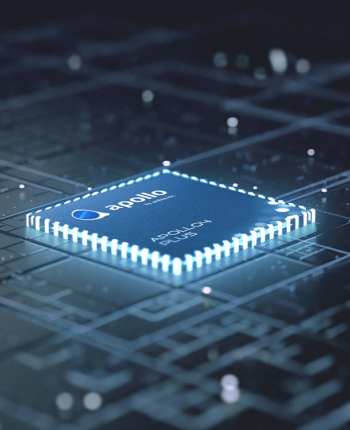
DCGAN is initialized with random weights, so a random code plugged into your network would generate a very random impression. Nonetheless, when you might imagine, the network has many parameters that we can tweak, plus the objective is to find a location of these parameters that makes samples created from random codes look like the teaching information.
OpenAI's Sora has lifted the bar for AI moviemaking. Here's 4 points to Remember as we wrap our heads all over what is coming.
In these days’s aggressive setting, where economic uncertainty reigns supreme, Remarkable activities are classified as the important differentiator. Reworking mundane tasks into significant interactions strengthens relationships and fuels progress, even in challenging moments.
SleepKit supplies a model factory that lets you easily develop and coach personalized models. The model manufacturing unit involves a number of modern day networks well matched for efficient, true-time edge applications. Just about every model architecture exposes a number of large-amount parameters that can be used to personalize the network for just a given application.
Actual applications hardly ever should printf, but that is a frequent operation though a model is being development and debugged.
more Prompt: The digicam instantly faces colorful structures in Burano Italy. An lovely dalmation appears by way of a window with a building on the ground flooring. Many people are strolling and biking together the canal streets in front of the buildings.
SleepKit delivers quite a few modes that may be invoked to get a specified undertaking. These modes could be accessed via the CLI or instantly in the Python package deal.
The library is can be used in two approaches: the developer can select one of your predefined optimized power configurations (defined listed here), or can specify their own like so:
Genie learns how to regulate game titles by seeing several hours and hrs of video. It could enable teach future-gen robots also.
The crab is brown and spiny, with prolonged legs and antennae. The scene is captured from a broad angle, showing the vastness and depth on the ocean. The h2o is clear and blue, with rays of sunlight filtering as a result of. The shot is sharp and crisp, having a substantial dynamic vary. The octopus as well as the crab are in emphasis, though the track record is a bit blurred, developing a depth of field impact.
Our website makes use of cookies Our website use cookies. By continuing navigating, we assume your permission to deploy cookies as in-depth in our Privateness Policy.
We’re quite excited about generative models at OpenAI, and also have just produced four tasks that advance the condition in the art. For each of such contributions we may also be releasing a complex report and supply code.
Autoregressive models like PixelRNN as an alternative prepare a network that models the conditional distribution of every personal pixel provided earlier pixels (for the still left and to the top).
Consumer Hard work: Enable it to be simple for purchasers to uncover the information they have to have. User-helpful interfaces and apparent communication are crucial.
Accelerating the Development of Optimized AI Features with Ambiq’s neuralSPOT
Ambiq’s neuralSPOT® is an open-source AI developer-focused SDK designed for our latest Apollo4 Plus system-on-chip (SoC) family. neuralSPOT provides an on-ramp to the rapid development of Edge intelligence AI features for our customers’ AI applications and products. Included with neuralSPOT are Ambiq-optimized libraries, tools, and examples to help jumpstart AI-focused applications.
UNDERSTANDING NEURALSPOT VIA THE BASIC TENSORFLOW EXAMPLE
Often, the best way to ramp up on a new software library is through a comprehensive example – this is why neuralSPOt includes basic_tf_stub, an illustrative example that leverages many of neuralSPOT’s features.
In this article, we walk through the example block-by-block, using it as a guide to building AI features using neuralSPOT.
Ambiq's Vice President of Artificial Intelligence, Carlos Morales, went on CNBC Street Signs Asia to discuss the power consumption of AI and trends in endpoint devices.
Since 2010, Ambiq has been a leader in ultra-low power semiconductors that enable endpoint devices with more data-driven and AI-capable features while dropping the energy requirements up to 10X lower. They do this with the patented Subthreshold Power Optimized Technology (SPOT ®) platform.
Computer inferencing is complex, and for endpoint AI to become practical, these devices have to drop from megawatts of power to microwatts. This is where Ambiq has the power to change industries such as healthcare, agriculture, and Industrial IoT.
Ambiq Designs Low-Power for Next Gen Endpoint Devices
Ambiq’s VP of Architecture and Product Planning, Dan Cermak, joins the ipXchange team at CES to discuss how manufacturers can improve their products with ultra-low power. As technology becomes more sophisticated, energy consumption continues to grow. Here Dan outlines how Ambiq stays ahead of the curve by planning for energy requirements 5 years in advance.
Ambiq’s VP of Architecture and Product Planning at Embedded World 2024
Ambiq specializes in ultra-low-power SoC's designed to make intelligent battery-powered endpoint solutions a reality. These days, just about every endpoint device incorporates AI features, including anomaly detection, speech-driven user interfaces, audio event detection and classification, and health monitoring.
Ambiq's ultra low power, high-performance Ambiq micro singapore platforms are ideal for implementing this class of AI features, and we at Ambiq are dedicated to making implementation as easy as possible by offering open-source developer-centric toolkits, software libraries, and reference models to accelerate AI feature development.

NEURALSPOT - BECAUSE AI IS HARD ENOUGH
neuralSPOT is an AI developer-focused SDK in the true sense of the word: it includes everything you need to get your AI model onto Ambiq’s platform. You’ll find libraries for talking to sensors, managing SoC peripherals, and controlling power and memory configurations, along with tools for easily debugging your model from your laptop or PC, and examples that tie it all together.
Facebook | Linkedin | Twitter | YouTube